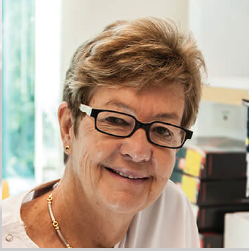Annual Scientific Meeting, 19th September 2019, Charles Perkins Centre, University of Sydney
Topics:
- Photoprotection by “overirradiation” metabolite of pre-vitaminD3, 24-hydroxy-lumisterol3: Acute and chronic UV exposure / Manori de Silva
- Intracellular CaSR is involved in photoprotection of CaSR allosteric modulators / Chen (Ashley) Yang
- Ultraviolet radiation as an initiator of keratoconus / Naomi Delic
- Acute epithelial cell dynamic response to low dose UV radiation / Guy Lyons
- Solar-simulated ultraviolet irradiation induces an immune regulatory skin-draining lymph node lipidome / Benita Tse
- 1,25-Dihydroxyvitamin D- Could it be used in the fight against melanoma? / Furkan Ince
- A workflow in R to identify B cell subsets of interest in multiple sclerosis patients / Felix Marsh-Wakefield
- Harnessing peptide-based therapy to control inflammatory skin diseases / Anneliese Ashhurst
- Sunlight and cardiovascular disease. A jealous Scot’s take on Australian health / Richard Weller
- Interrelationships between dietary vitamin D, exposure to UV radiation and the faecal microbiome / Prue Hart
James Wilmot – Melanoma Institute Australia, University of Sydney
Dr Wilmott is the research leader of the Translational Melanoma
Research Group. He is a current holder of an NHMRC early career
fellowship and received his PhD in 2013 from the University of Sydney. Dr Wilmott is recognised internationally as an emerging expert in clinical implications of genomic profiles, immune profiling of cancer tissue and in biomarkers of response of systemic therapies. Dr Wilmott’s research aims to improve cancer patient selection for anti-cancer therapies and discover new treatment options for those in need of effective therapies.

Mainthan Palendira – Centenary Institute, University of Sydney
Dr Palendira leads the Human Viral and Cancer Immunology Laboratory, which focusses on human immunology research with a particular interest in cancers and viral infections. His laboratory is interested in understanding how the human immune system normally controls Epstein Barr Virus, and to what extent it contributes to disease. Dr Palendira completed his PhD in the laboratory of Prof Warwick Britton at the Centenary Institute in 2004. He then undertook post-doctoral training in the UK as a CJ Martin fellow before returning to the Garvan Institute, followed by the University of Sydney.

Richard Weller – University of Edinburgh
Dr Weller, a dermatologist, made the first description of nitric oxide production on the skin surface in 1996 and went on to study the role of this naturally produced NO. He showed that human skin contains large stores of nitrogen oxides and that these are photo-reduced by UV radiation releasing NO to the circulation, with systemic effects, in particular lowering of blood pressure. This work is summarised in a TED talk and Richard has co-founded Relaxsol based on this research, with which he has developed the first sunscreen that both protects from UV and allows release of NO.

Prof Prue Hart – Telethon Kids Institute
Prof Hart is the Head of Inflammation at the Telethon Kids Institute where her team focuses on the effects of ultraviolet radiation and vitamin D3 on the immune system with their ground-breaking work showing that UV irradiation of mice, with doses equivalent to a short period in the midday sun, can be protective against developing autoimmune conditions and respiratory diseases. Prof Hart has held previous positions at The University of Queensland, Rigshospitalet in Copenhagen, The University of Melbourne and Flinders University. Prof Hart is recognised internationally as an authority on photoimmunology.






